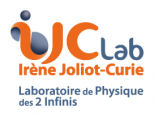GW170817 – GRB 170817A provided the first observation of gravitational waves from a neutron star merger with associated transient counterparts across the entire electromagnetic spectrum. This discovery demonstrated the long-hypothesized association between short gamma-ray bursts and neutron star mergers. More joint detections are needed to explore the relation between the parameters inferred from the gravitational wave and the properties of the gamma-ray burst signal. We developed a joint multi-messenger analysis of LIGO, Virgo, and Fermi/GBM data designed for detecting weak gravitational-wave transients associated with weak gamma-ray bursts. As such, it does not start from confident (GWTC-1) events only. Instead, we take the full list of existing compact binary coalescence triggers generated with the PyCBC pipeline from the second Gravitational-Wave Observing Run (O2), and reanalyze the entire set of public Fermi/GBM data covering this observing run to generate a corresponding set of gamma-ray burst candidate triggers. We then search for coincidences between the gravitational-wave and gamma-ray burst triggers without requiring a confident detection in any channel. The candidate coincidences are ranked according to a statistic combining each candidate’s strength in gravitational-wave and gamma-ray data, their time proximity, and the overlap of their sky localization. The ranking is then converted to a false-alarm rate using time shifts between the gravitational-wave and gamma-ray burst triggers. We present the results using O2 triggers which allowed us to check the validity of our method against GW170817 – GRB 170817A. We also discuss the different configurations tested to maximize the significance of the joint detection.





bandeau-ijclab-ondesgravita
bandeau-ijclab-cuve-nuit
bandeau-ijclab-cuves-pampa
bandeau-ijclab-fond-cosmique
bandeau-ijclab-A2C-ASSD




